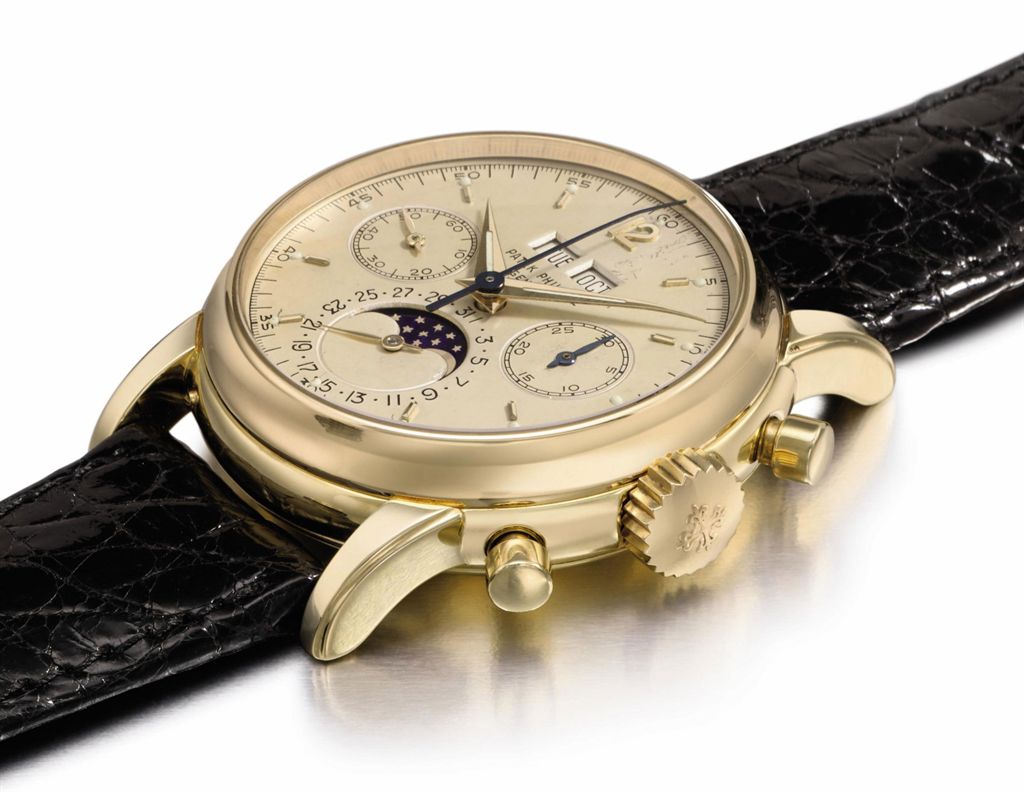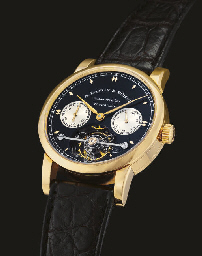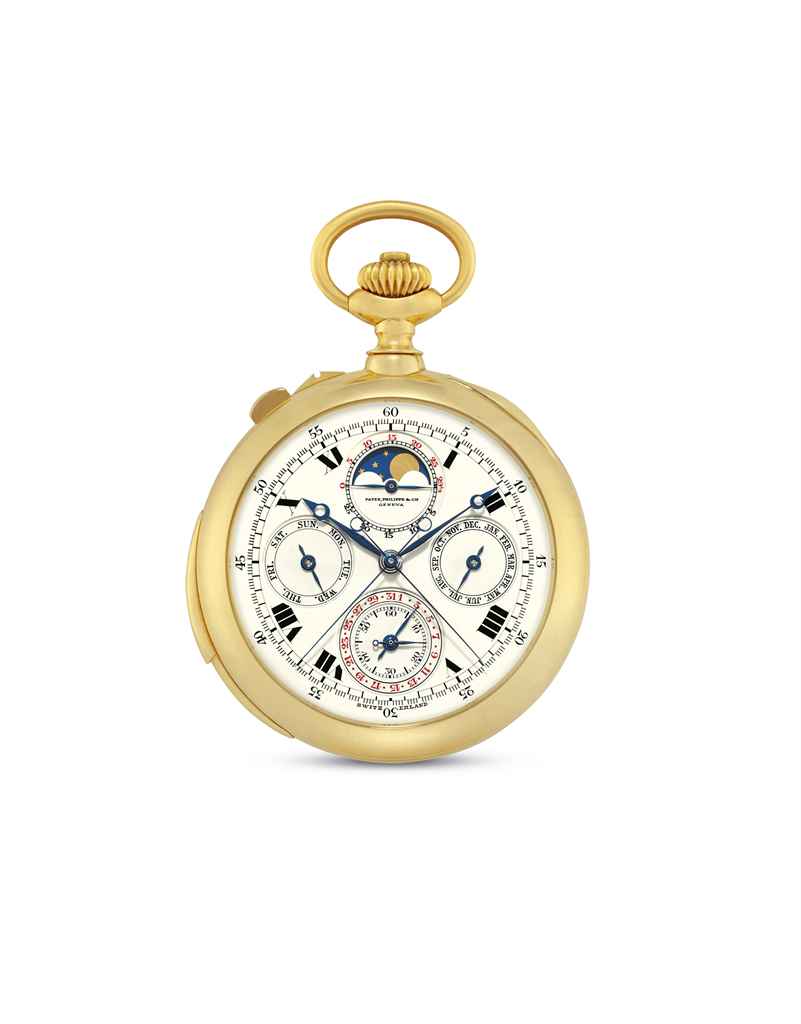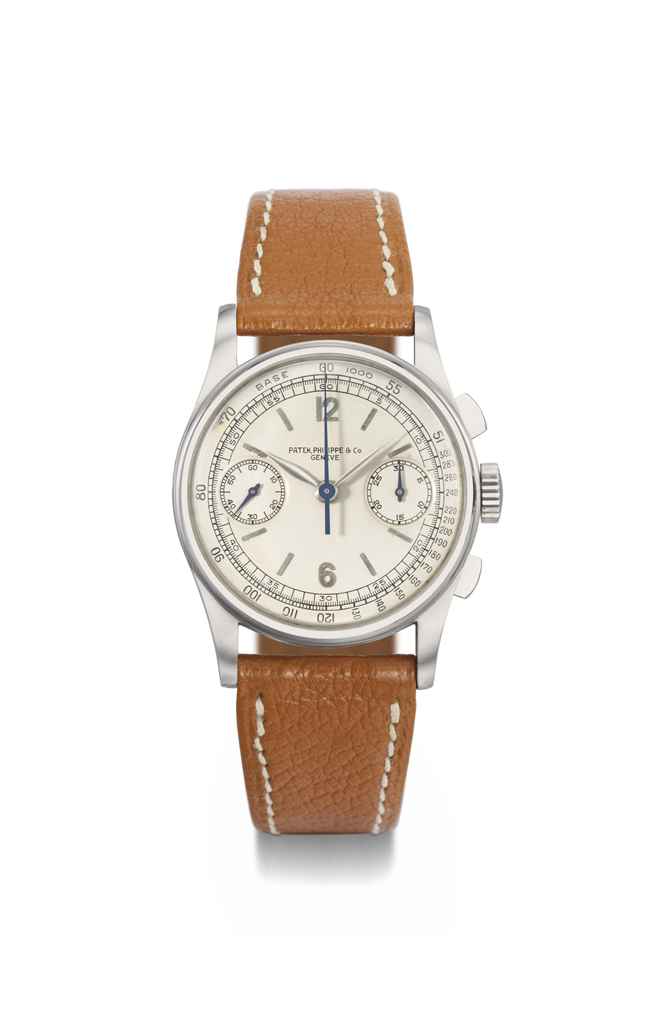A FINE AND RARE GEORGE II GILT BRASS MOUNTED EBONISED QUARTER-STRIKING TABLE CLOCK HENRY HINDLEY, YORK, MID 18th CENTURY The six distinctive double-baluster turned pillar twin chain fusee movement with arched plates measuring 10.25 by 6 inches enclosing greatwheels fitted to the narrow ends of the fusee cones, the going train incorporating perpendicular contrate drive from the centre-wheel to the escapement positioned at the apex of the plates, now with deadbeat escapement incorporating Brocot-type pallets positioned between the dial and the front plate (behind a shaped bridge) and regulated by half-seconds lenticular bob pendulum swinging to the rear, the two-in-one quarter-striking train incorporating single rack for both hours and the quarters utilising a standard snail arrangement to set the count for the former, and a second three-tooth rack stop lever (acting on a pin set in the hour rack arm) to control the latter, sounding on a graduated pair of bells with the hour on the larger and the quarters on both via dedicated hammers (incorporating Hindley's distinctive 'L' shaped springs) driven by the same pin wheel with automatic positioning via lateral pump action facilitating disengagement of the quarter hammers and engagement of third single hour hammer leading up to the hour, the backplate applied with an additional second plate finely engraved with asymmetric scrolling foliage around a central circular cartouche signed Hen. Hindley, of YORK flanked by Ho-Ho bird, lion and grotesque mask inhabited strapwork, the 7 inch arched brass dial with richly matted centre within applied silvered Roman numeral dial with Arabic five minutes to outer track and signed H. Hindley, York to lower edge, with scroll-pierced steel hands and lambrequin mask centred scroll cast spandrels, the upper margin with Strike quar's/Hr/Silent selection beneath arch centred with a subsidiary seconds dial flanked by female sphinx inhabited scroll cast mounts, the plate further applied with raised ogee border mouldings incorporating architectural cavetto 'capitals' and keystone details, the ebonised bell-top case with hinged brass carrying handle and pineapple finials over complex top mouldings and arch-glazed hinged front incorporating generous gilt fillet moulding to dial aperture, foliate scroll cast gilt upper quadrant frets and applied with female term mounts to uprights, the sides with arched brass fish scale sound frets and the rear with rectangular glazed door set within the frame of the case, on stepped ogee moulded skirt base. 48cm (19ins) high with handle down, 27.5cm (10.75ins) wide, 18.5cm (7.25ins) deep. Henry Hindley was born in Great Harwood, near Blackburn, Lancashire 1699, little is known about his early life, however by the mid 1720's he was making clocks in Wigan where he repaired the church clock in 1726. Hindley moved with his young family (including his son, Joseph born 1728) to the prosperous city of York where, after making clocks for the Mansion House and Guildhall, he gained his Freedom of the city in 1732. Hindley s talents were such that he equipped his workshop with tools of his own design including an important dividing and wheel cutting engine, a screw cutting lathe and a fusee engine. As well as domestic clocks Hindley received commissions for several turret clocks including York Minster and supplied a range of scientific instruments including two important equatorial telescopes for the Duke of Norfolk and William Constable By the 1760 s Hindley s health had deteriorated to the extent that an ever-increasing proportion of the business was handled by his son Joseph. Henry died in 1771 with his son and successor Joseph unfortunately dying just three years later in 1774, before he had had the opportunity to stamp his own mark on the family firm. According to the late Rodney Law, of Hindley's work only around 15 'spring clocks' are known versus around 40 longcases (see Law, R.J. HENRY HINDLEY OF YORK 1701-1771, PART II - pub
A FINE AND RARE GEORGE II GILT BRASS MOUNTED EBONISED QUARTER-STRIKING TABLE CLOCK HENRY HINDLEY, YORK, MID 18th CENTURY The six distinctive double-baluster turned pillar twin chain fusee movement with arched plates measuring 10.25 by 6 inches enclosing greatwheels fitted to the narrow ends of the fusee cones, the going train incorporating perpendicular contrate drive from the centre-wheel to the escapement positioned at the apex of the plates, now with deadbeat escapement incorporating Brocot-type pallets positioned between the dial and the front plate (behind a shaped bridge) and regulated by half-seconds lenticular bob pendulum swinging to the rear, the two-in-one quarter-striking train incorporating single rack for both hours and the quarters utilising a standard snail arrangement to set the count for the former, and a second three-tooth rack stop lever (acting on a pin set in the hour rack arm) to control the latter, sounding on a graduated pair of bells with the hour on the larger and the quarters on both via dedicated hammers (incorporating Hindley's distinctive 'L' shaped springs) driven by the same pin wheel with automatic positioning via lateral pump action facilitating disengagement of the quarter hammers and engagement of third single hour hammer leading up to the hour, the backplate applied with an additional second plate finely engraved with asymmetric scrolling foliage around a central circular cartouche signed Hen. Hindley, of YORK flanked by Ho-Ho bird, lion and grotesque mask inhabited strapwork, the 7 inch arched brass dial with richly matted centre within applied silvered Roman numeral dial with Arabic five minutes to outer track and signed H. Hindley, York to lower edge, with scroll-pierced steel hands and lambrequin mask centred scroll cast spandrels, the upper margin with Strike quar's/Hr/Silent selection beneath arch centred with a subsidiary seconds dial flanked by female sphinx inhabited scroll cast mounts, the plate further applied with raised ogee border mouldings incorporating architectural cavetto 'capitals' and keystone details, the ebonised bell-top case with hinged brass carrying handle and pineapple finials over complex top mouldings and arch-glazed hinged front incorporating generous gilt fillet moulding to dial aperture, foliate scroll cast gilt upper quadrant frets and applied with female term mounts to uprights, the sides with arched brass fish scale sound frets and the rear with rectangular glazed door set within the frame of the case, on stepped ogee moulded skirt base. 48cm (19ins) high with handle down, 27.5cm (10.75ins) wide, 18.5cm (7.25ins) deep. Henry Hindley was born in Great Harwood, near Blackburn, Lancashire 1699, little is known about his early life, however by the mid 1720's he was making clocks in Wigan where he repaired the church clock in 1726. Hindley moved with his young family (including his son, Joseph born 1728) to the prosperous city of York where, after making clocks for the Mansion House and Guildhall, he gained his Freedom of the city in 1732. Hindley s talents were such that he equipped his workshop with tools of his own design including an important dividing and wheel cutting engine, a screw cutting lathe and a fusee engine. As well as domestic clocks Hindley received commissions for several turret clocks including York Minster and supplied a range of scientific instruments including two important equatorial telescopes for the Duke of Norfolk and William Constable By the 1760 s Hindley s health had deteriorated to the extent that an ever-increasing proportion of the business was handled by his son Joseph. Henry died in 1771 with his son and successor Joseph unfortunately dying just three years later in 1774, before he had had the opportunity to stamp his own mark on the family firm. According to the late Rodney Law, of Hindley's work only around 15 'spring clocks' are known versus around 40 longcases (see Law, R.J. HENRY HINDLEY OF YORK 1701-1771, PART II - pub















Testen Sie LotSearch und seine Premium-Features 7 Tage - ohne Kosten!
Lassen Sie sich automatisch über neue Objekte in kommenden Auktionen benachrichtigen.
Suchauftrag anlegen